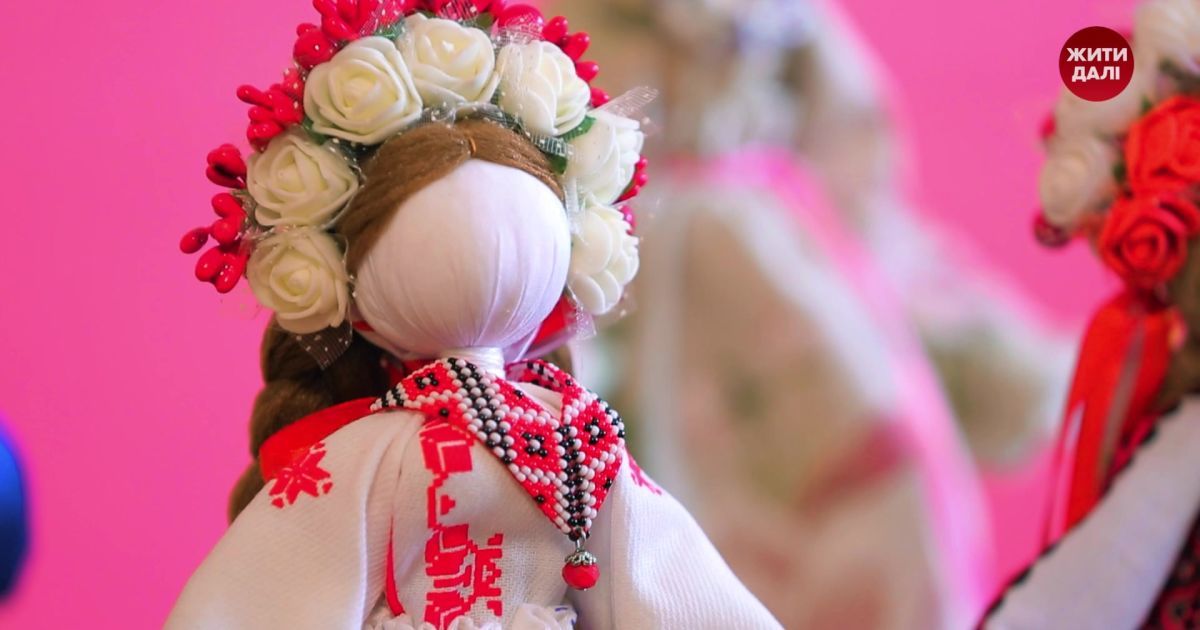More than a hundred Ukrainians danced around a four-meter-long Motanka doll under the leadership of the famous choreographer Olena Shoptenko.
"It was a concert for Ukraine's Independence Day in Austria," says Olena.
- The dance is called "Motanka", it is dedicated to a Ukrainian woman.
I really wanted every woman who saw this dance to feel that she was not alone.
And we all support each other."
The Motanka doll became one of the symbols of this war.
The brides of captured Azov citizens dressed up as tortured dolls as a sign of support and protection for their husbands.
And our defenders use motanka as a charm.
"They always keep them close to their hearts - somewhere in their pocket, or hang them on their pocket.
It's like a little angel who is attached to them," says the master puppeteer Tetyana Bilkevych.
During the eight years of the war, Tatiana wound the dolls, which she handed over to the front, and received endless thanks in return: the soldiers believed that the winder protected them from enemy bullets.
How and why did the twisted toy become a symbol of the indomitability of the whole country?
"All peoples who lived on the territory of Europe had the image of a mother goddess who gives life to all living things.
And who protects her children, - explains culturologist Gromovytsa Berdnyk.
- On the one hand, it was a child's toy.
But on the other hand, it was the first amulet.
Because the mother put the first doll in the child's cradle.
The child was born, the mother wound the doll-motanaka and she put all the best things that she wanted to wish for her child into this doll.
The craftswoman Zinaida Bugaichuk makes motanki, which are given to world leaders.
She recreated the very first dolls that Ukrainian mothers used to wrap for babies long ago: "In addition to the play doll, there can be a ritual doll - for example, a doll that was made for Shrove Tuesday.
Mother used to put such a Berehynia doll in a chest when giving her daughter in marriage.
"Many researchers now agree that the Motanka doll is not only a talisman, not only a children's toy, but also a magical artifact," says Gromovytsia Berdnyk.
Immediately after the deoccupation of Kyiv region, Ukrainian museum workers collected thousands of artifacts and created the first exhibition dedicated to the full-scale invasion of Russia.
The main exhibit was a giant motanka doll.
It was created by a resident of the village of Velyka Oleksandrivka, in the Kyiv region, during the offensive of enemy troops.
"When she heard the shelling, she decided that it was necessary to somehow protect her village," recalls Yaroslava Pasichko, head of the National Museum of the History of Ukraine in the Second World War.
- And they began to wear brightly colored ribbons, a necklace.
This doll has more than just a dress, it was made from old towels that neighbors brought to her workshop.
Even in the patterns, in the ornaments, these symbols are embedded, which are supposed to scare away the enemy, evil spirits, and evil forces."
"The motanka doll was used in magical rituals," confirms the mystical power of the amulet Gromovytsia Berdnyk.
- In chests, in old houses, they found a thread, and in it, for example, there were needles.
That is, it was some kind of harmful magic.
But magic was also positive."
"When we wind a winder doll, we convey a part of our soul, our thoughts," says craftswoman Tetyana Bilkevych.
- When you invest your energy, with such good, pure thoughts, it will protect you."
"According to folk beliefs, it is believed that the Motanka doll, which was made during the war, has the greatest energy, because the master invests in it faith in victory, faith in the fact that everything will be fine with a person," - confident puppeteer Zinaida Bugaichuk .
Whether you believe in ancient charms or not, the village of Velyka Oleksandrivka, which was guarded by a giant motanka doll, did not fall under occupation: the forces of the TRO and the Armed Forces of Ukraine stopped the enemy just a few kilometers from it.
"Motanka is a powerful Ukrainian symbol.
I have already given these boots to all my foreign friends.
I think this is the best gift that reflects our culture," says choreographer Olena Shoptenko.
"Today, my dolls are sold, and the funds are directed to the support of Ukraine and the Armed Forces - in Lithuania, Slovakia, Belgium, Poland, Germany," shares Zinaida Bugaichuk.
- I know many cases when a Motanka doll settles in a foreigner's house with the awareness that it is also a charm."
Each of you can create an ancient charm yourself - especially for readers and subscribers of the "Live on" project, craftswoman Zinaida Bugaichuk will show and tell you how to make the same doll-motanka.
Go to the link (link) and see the step-by-step instructions in the story.
